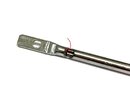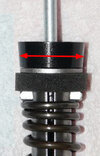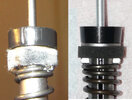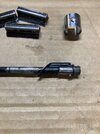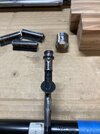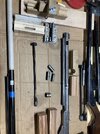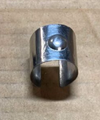Air tube mods will consist of enlarging the tube's inner diameter up to 1/8, what are you guys having luck with? what is to big? The air inlet hole will be modified, the hard entry with be radiused, the back will be epoxied shut eliminating any turbulence all air will easily shoot out the front with very little turbulence. Air doesn't not like to flow around sharp edges and turns here is a picture showing what area will be epoxied.
Attachments
Last edited:


